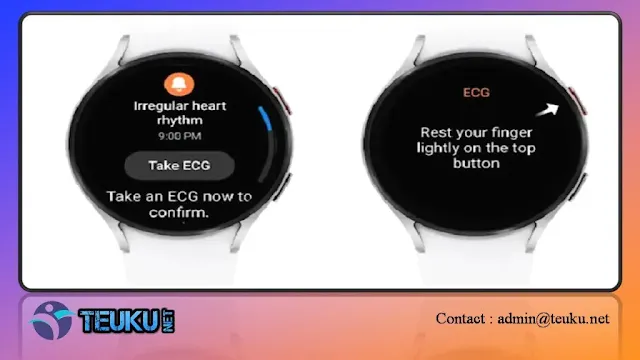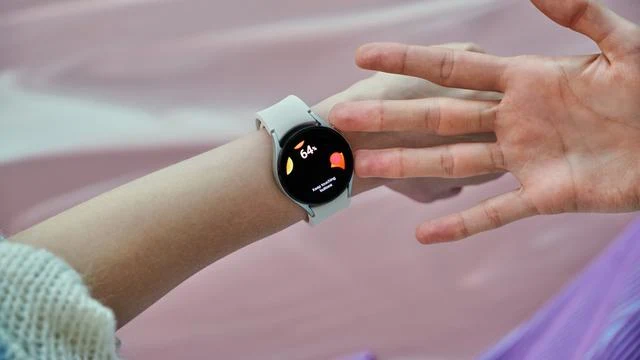Samsung has received approval from the United States Food and Drug Administration (USFDA) for the Irregular Heart Rhythm Notification (IHGN) notification feature on the upcoming Galaxy Watch 6 device.
According to the company, the feature works with electrocardiogram (ECG) capabilities that can identify signs of atrial fibrillation (AFib), a type of arrhythmia. Functionally, the feature is similar to the passive AFib monitoring that Fitbit introduced last year.
Once this feature is active, the Galaxy Watch's BioActive Sensor will monitor the heart rate rhythm in the background and alert you when consecutive irregular measurements are found.Then, the user will be advised to do an EKG test in the Samsung Health Monitor application for more accurate measurements. If the test detects signs of AFib, the device will urge the user to consult a healthcare professional immediately.
In a press release quoted from The Verge, Wednesday (10/5/2023), Samsung said that this feature would first come to the Galaxy Watch which was released later this year, before expanding it to earlier models. The IHGN Galaxy Watch feature is also part of the One UI 5 Watch update that was announced last weekend.
In general, this new feature is in line with Samsung's goal of positioning the Galaxy Watch as a qualified medical device. But in fact, this device still has gaps when compared to other smartwatches.
{getToc} $title={Table of Contents}
Smartwatches Rely on Health Features to Compete in the Market
Despite that, Samsung says that the availability of the IHGN feature will depend on the market, carrier, model, and smartphone that the device is paired with. Several updates, such as personalized heart rate zones and improved emergency SOS, are an attempt to catch up with other smartwatches.
In addition to Fitbit, this kind of feature has also been included in Apple's watchOS 9 which allows users with irregular heart rate rhythms to track the amount of time they spend in AFib. That aside, it's not surprising that Samsung is aggressively improving its technology, considering the high competition from other devices. For example, Pixel Watch sales are so massive that they are ranked 2nd in the market.
Wear OS 3 is also likely to bring some updates which will be revealed at the upcoming Google I/O. This will sharpen the competition in the Android smartwatch market with its various health features.
The Samsung Galaxy Watch 6 will return with a rotating bezel
On the other hand, the Galaxy Watch 6 series is rumored to be bringing back the rotating bezel. This physical feature has become a user favorite before being removed from the Galaxy Watch 5 series. Even though the Galaxy Watch 5 offers a choice of attractive models, Samsung's decision to abolish the rotating bezel seems to be a shame for fans. This feature really dates back to the time when Samsung introduced its smartwatch as the “Samsung Gear”.
Reporting from GizmoChina, Wednesday (15/03/2023), the prediction of the return of the rotating bezel on the Samsung Galaxy Watch 6 Series was revealed by a YouTuber, Super Roader. However, it is estimated that this rotating bezel will only be present on the Galaxy Watch 6 Pro series. Meanwhile, on the usual Galaxy Watch 6, users can only enjoy the digital bezel as in the previous series.
This physical, rotatable bezel has long been a key feature of Samsung's smartwatches. On the Galaxy Watch 4 Series or earlier, Samsung users can experience the joy of using a rotating bezel.
The Samsung Galaxy Watch 6 Series Will Improve Battery Life
On the other hand, the upcoming Samsung Galaxy Watch 6 Series is rumored to launch in August, if you refer to the same schedule as last year.
The upgrade that this latest series brings will focus on increasing battery life. Reporting from GalaxyClub via TechRadar, the Galaxy Watch 6 Series will come with a battery capacity of 300 mAh or 425 mAh depending on the size. If you follow last year, sizes will range between 40mm and 44mm.
This capacity has increased from the previous 284 mAh and 410 mAh. With this, it is hoped that the hardware and software used will also receive updates to support increased battery life.




